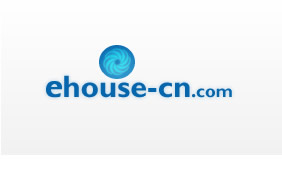![]()
![]()
![]()
![]()

![]()
![]()
![]()
![]()
![]()
![]()
![]()
| Articles
The popularity of using Flash components in websites has increased markedly, particularly after Adobe took ownership of Macromedia. Web designers are finding it easier than before to incorporate Flash more creatively and seamlessly into websites, without hampering download speeds. Flash is a natural fit for Web designers. It enhances the visual appeal of a web page with its ability to deliver the message in a continuous movie format accompanied by audio. Its vector-based graphics are able to increase the interactive functionality of the website, which in turn increases the visitor to customer conversion rate. With animated graphics and a supportive audio track, Flash is able to attract the attention of the visitor within the first vital seconds, that determine whether a visitor considers it worthwhile to further explore the website. The extensive multimedia capabilities of Flash, allow complex ideas to be presented in a more effective manner. Flash movies also load faster than other scripting such as JavaScript. However, Flash is also prone to overuse. This causes websites to load slowly or cause the user excessive distraction with unnecessary animation. As text in Flash media cannot be read by search engines, it does compromise SEO (Search Engine Optimization) efforts. When designing with Flash, the following should serve as a quick checklist: 1. Give the visitor an option to skip Repeating the presentation of the same Flash movie each time a page is visited should be avoided. Give visitors an option to skip the presentation by offering a skip button. 2. Make the website SEO compatible Search engines do not crawl content in a Flash presentation, (though lately, there have been some positive developments in this regard). The result would be a non-listing of the website in search engine results. One solution is to create web pages that have both Flash and text elements. You can put the keyword rich text in an HTML text format, leaving images and minimal text for the Flash-enabled banners, thus catering to both SEO and design. You can then selectively submit only those pages to the search engines which are not totally Flash-based. 3. Don't forget the deadlines Making complex Flash presentation is a time consuming process. If you are working against short deadlines, develop your HTML site first and add Flash elements after it has been put online. 4. Use Flash judiciously Using Flash for the sake of it can prove counter-productive as it can come in the way of information gathering, particularly if the site's purpose is to impart knowledge with a high density of text. Just the minimal use of Flash is often all that is needed, in for example, stock market related sites. In such sites, you can use interactive based graphs created in Flash to provide greater user flexibility and customization. 5. Don't go over budget Flash components raise the cost of website development. Therefore the extent of Flash usage in a site should be well planned to keep costs within budget. Flash presents immense possibilities to enable designers to innovate and make websites interactive and absorbing. But remember, it is just another tool. Use it sparingly for greater impact. Cyrus Bilimoria is a Director of Saffron-Multimedia.com and is a Flash web site designer and developer. He has contributed to several insightful articles on flash web site design, flash web site templates and articles on Economics. Data Recovery Software Tips for Laptop Hard Drive - An average computer user face data lost in their computer. A Brief Introduction to EX - Find out what E4X is and why it might be important for web designers to learn to use it. The Pros and Cons of Shared Hosting - As more and more individuals and businesses rush to the Net to establish a business or even a personal presence, the question of what is the most appropriate web hosting choice becomes of paramount concern. Dedicated Hosting Linux Dedicated Hosting Window Web Hosting - Web is a uncomplicated internet service that allows , and to show a effective presence on the World Wide Web. Choosing the Best WAHM Website Hosting - This article will show you how to get the best bang for your buck when selecting webhosting for your website and business. more... |
![]()
© Copyright 2025 ehouse-cn Web Hosting. All rights reserved.
Unauthorized duplication in part or whole strictly prohibited by international
copyright law.
![]()
